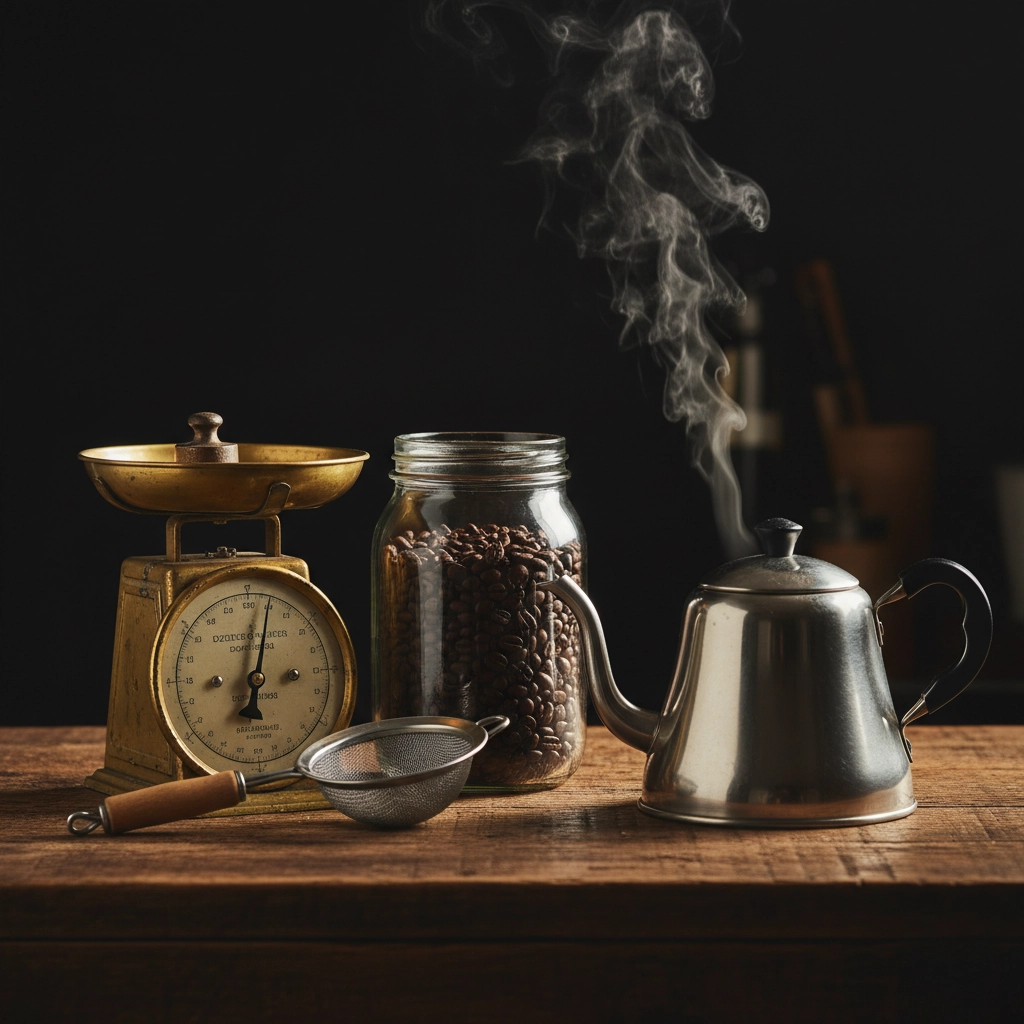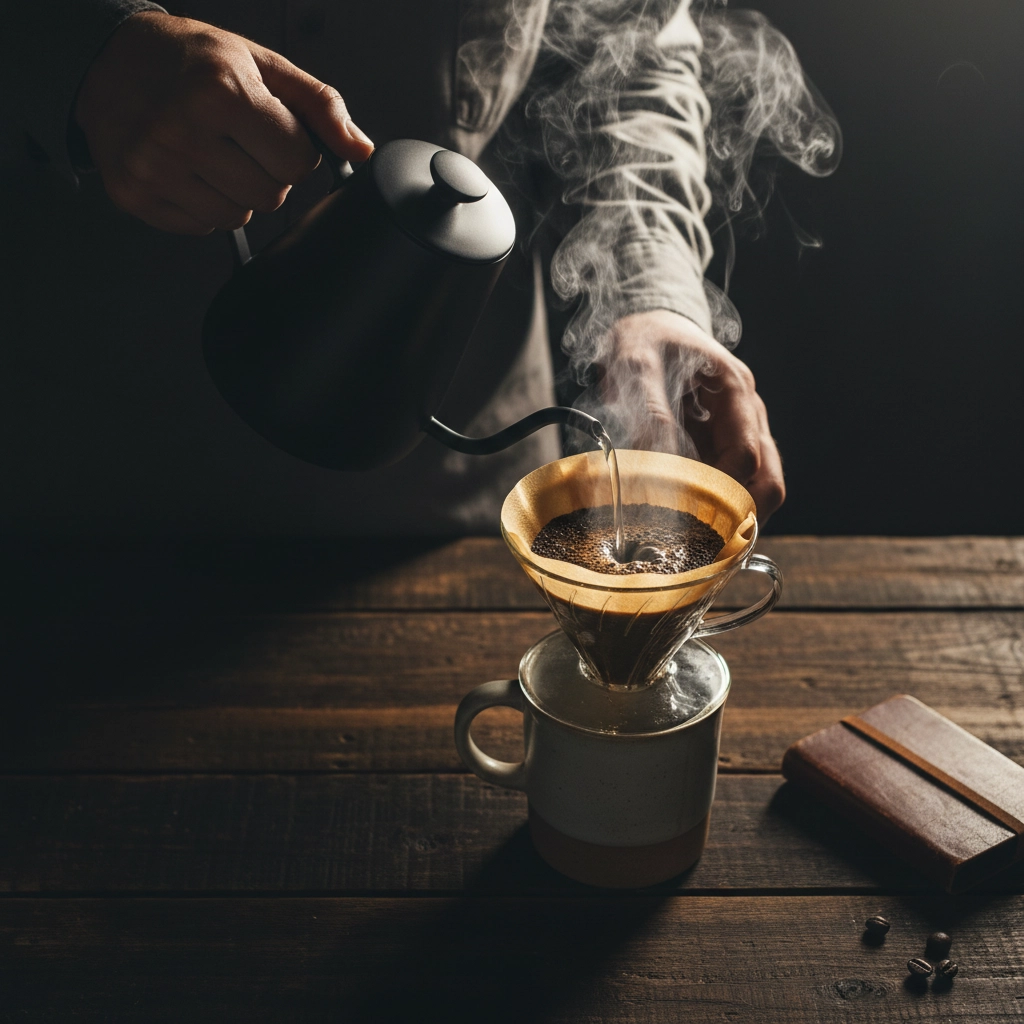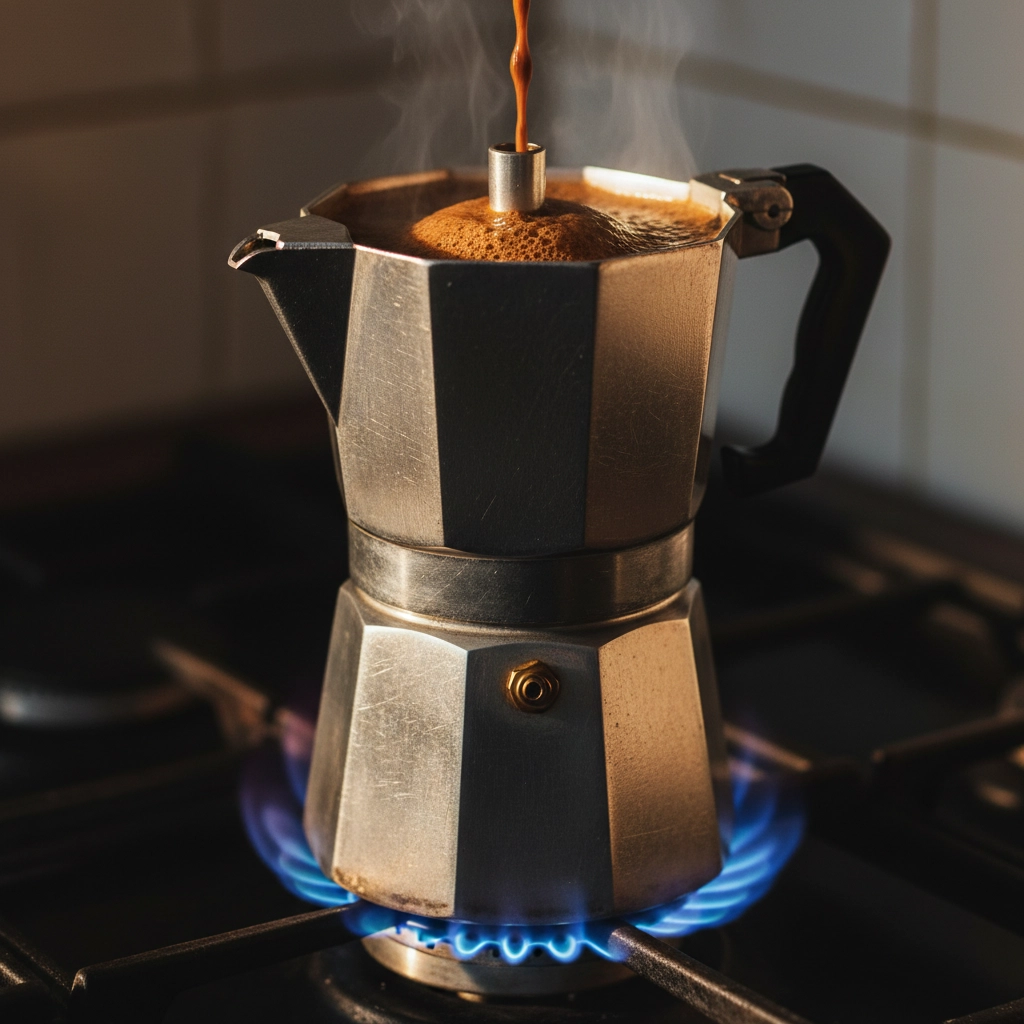You don't need a $500 espresso machine or barista training to brew café-quality coffee at home. In fact, some of the world's best coffee can be made with equipment you probably already have in your kitchen. The secret isn't expensive gear—it's understanding the fundamentals of good brewing and having quality beans to work with.
Whether you're rushing out the door for work or want to impress guests without the hassle, these time-tested methods will have you sipping exceptional coffee in just five minutes or less. Let's dive into the techniques that coffee professionals use to create consistently great cups, simplified for your home kitchen.
The Foundation: What You Actually Need
Before we jump into brewing methods, let's talk about the essentials. You don't need to invest in costly equipment, but a few basic items will make all the difference in your final cup.
Fresh, Quality Beans: This is where you can't compromise. Coffee's flavor peaks within two weeks of roasting, so always look for recently roasted beans. Our freshly roasted blends at Gently Ground Coffee are perfect for these quick brewing methods, delivering the rich flavors you'd expect from your favorite café.
A Way to Grind: A burr grinder is ideal for uniform particle size, but if you don't have one, ask your local coffee shop to grind your beans. Just remember to use them within a few days for best results.
Kitchen Scale: Consistent measurements are key to repeatable results. A basic digital scale helps you nail the coffee-to-water ratio every time.
Heat Source: Any kettle, pot, or even a microwave will work. A gooseneck kettle gives better control for pour-overs, but it's not essential.

Method 1: The Quick Immersion Technique (4-5 Minutes)
This method mimics a French press without needing the actual equipment. It's foolproof and produces a full-bodied cup with rich flavor.
What You'll Need: A heat-proof jar or large mug, coarse-ground coffee, hot water, and a fine mesh strainer or cheesecloth.
Step-by-Step:
- Add 2-3 tablespoons (about 17 grams) of coarse-ground coffee to your jar
- Pour 1 cup of just-boiled water over the grounds
- Stir to combine and let steep for 4 minutes
- Strain through your fine mesh or cheesecloth into your mug
The coarse grind (think sea salt texture) prevents over-extraction while the full immersion allows for maximum flavor development. This method often produces a perceived stronger flavor because of the insoluble particles that remain in the final cup.
Method 2: DIY Pour-Over Magic (3-4 Minutes)
Pour-over coffee offers a cleaner, more nuanced flavor profile. You can achieve café-quality results with improvised equipment.
What You'll Need: A funnel or cone-shaped vessel, paper filters (coffee filters or even paper towels in a pinch), medium-ground coffee, and a steady hand.
The Process:
- Heat water to about 200°F (just off the boil)
- Place filter in your makeshift pour-over setup
- Add 15-18 grams of medium-ground coffee (like kosher salt texture)
- Pour a small amount of hot water to "bloom" the grounds (30-45 seconds)
- Continue pouring in slow, circular motions, keeping water level consistent
- Total brew time: 3-4 minutes
The bloom phase releases trapped CO2 and primes the grounds for even extraction. This initial 30-second pause makes a noticeable difference in your final cup's clarity and flavor balance.

Method 3: Stovetop Concentration (5 Minutes)
If you have a Moka pot gathering dust in your cabinet, this is your time to shine. This method produces an espresso-like concentration perfect for café-style drinks.
The Setup:
- Grind 20-22 grams of coffee as fine as possible
- Fill the bottom chamber with 3½ fluid ounces of water
- Add grounds to the built-in filter, level but don't pack
- Screw on the top and place on medium heat
- Remove from heat when coffee begins foaming in the upper chamber
The pressure created by heated water produces a concentrated, slightly foamy coffee that's perfect as a base for lattes or enjoyed straight as a strong morning pick-me-up.
Method 4: The Mason Jar Cold Brew Concentrate (For Planning Ahead)
While this takes longer to brew initially, once made, it provides instant café-quality coffee for days.
The Method:
- Combine 1 cup coarse-ground coffee with 4 cups cold water in a large jar
- Stir and let sit at room temperature for 12-24 hours
- Strain through cheesecloth or fine mesh
- Store concentrate in fridge for up to a week
To serve: Mix equal parts concentrate and hot water, or pour over ice for cold coffee. This method produces a smooth, low-acid coffee that's incredibly versatile.

Pro Tips for Consistent Excellence
Water Quality Matters: Since coffee is 98% water, using filtered water will noticeably improve your results. Hard or soft water can dramatically affect extraction and taste.
Master the Ratios: Start with 1:15 to 1:17 (coffee to water) ratio and adjust to taste. Stronger preference? Go 1:14. Prefer lighter? Try 1:18.
Temperature Control: Water that's too hot burns the coffee, while too cool water under-extracts. Aim for 195-205°F, which is about 30 seconds after boiling stops.
Timing is Everything: Most brewing methods work best between 3-5 minutes. Shorter extraction often tastes sour, while longer can become bitter.
Grind Size Guidelines:
- Coarse (French press style): Like breadcrumbs
- Medium (pour-over): Like kosher salt
- Fine (espresso/Moka pot): Like table salt
Troubleshooting Common Issues
Bitter Coffee: Usually means over-extraction. Try a coarser grind, shorter brew time, or cooler water.
Sour Coffee: Indicates under-extraction. Use finer grind, longer brew time, or hotter water.
Weak Coffee: Increase your coffee-to-water ratio or extend brew time slightly.
Inconsistent Results: Focus on consistent measurements and timing. A kitchen scale eliminates most variables.
Elevating Your Home Coffee Game
The beauty of these methods lies in their simplicity and room for experimentation. Once you master the basics, you can start playing with different variables to dial in your perfect cup.
Try different grind sizes within the recommended range. Experiment with water temperature. Adjust steeping times by 30-second increments. Small changes can lead to dramatically different flavor profiles, helping you discover preferences you never knew you had.
Equipment Upgrades Worth Considering: While not necessary, a few affordable upgrades can improve your coffee experience. A simple pour-over dripper ($10-15) gives better control than makeshift funnels. A basic kitchen scale ($15-20) ensures consistency. A burr grinder ($30-50) provides better particle uniformity than blade grinders.
Remember, the most expensive equipment won't fix poor-quality beans or bad technique. Focus on mastering these fundamentals with good coffee, and you'll consistently brew cups that rival your favorite café—all in five minutes or less, using equipment that costs a fraction of professional machines.
The key to café-quality coffee isn't complexity or expensive gear—it's understanding how to extract the best flavors from quality beans using simple, time-tested techniques. With practice, any of these methods will become second nature, giving you exceptional coffee whenever you need it most.




